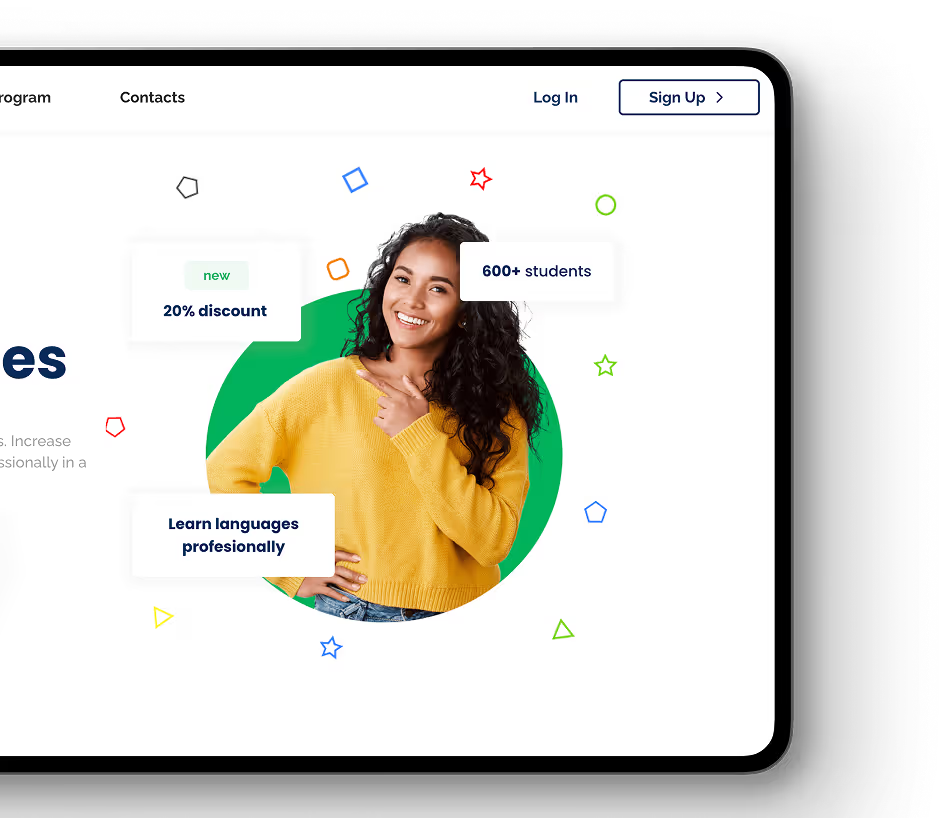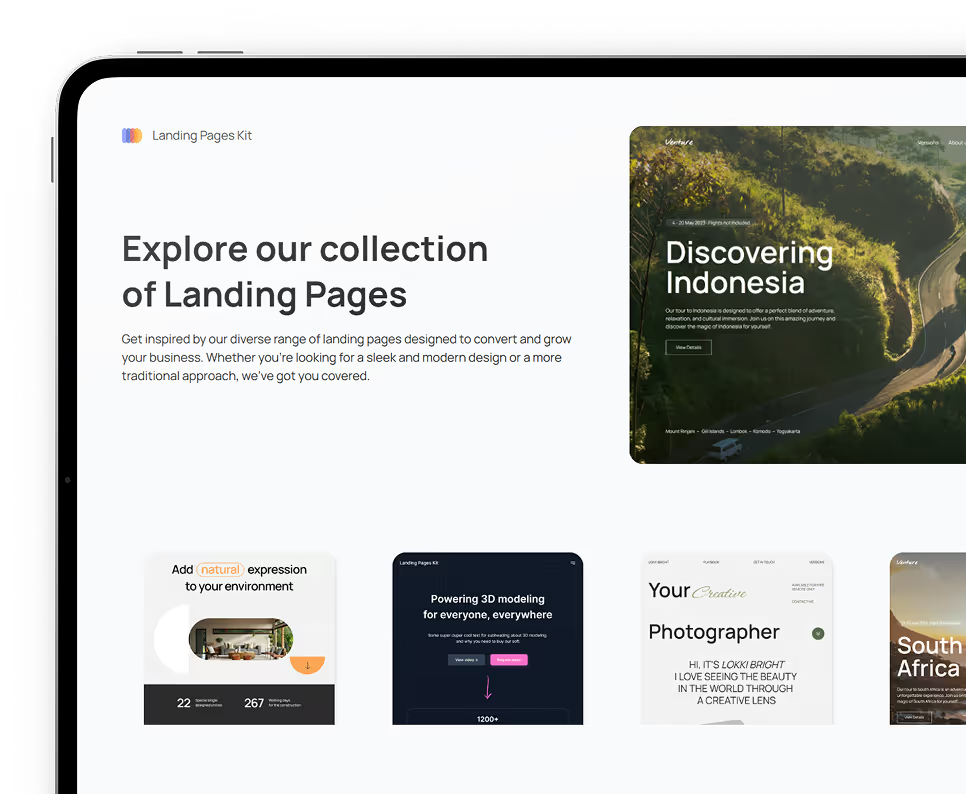March 29, 2024
•
10
min read
From Concept to Code: How to Develop a New Software Product
Innovate and iterate: Guiding you through the software development journey, from idea to execution.

Software development encompasses the processes involved in creating, specifying, designing, programming, documenting, testing, and bug fixing involved in creating and maintaining applications, frameworks, or other software components. It is a systematic approach that seeks to translate a user's needs or an imagined need into a software product.
Innovation in software products is crucial for maintaining a competitive edge and meeting the evolving needs and expectations of users.
It involves introducing new features, improving performance, and enhancing usability and accessibility. Innovative software solutions can disrupt industries, offer new business opportunities, and provide solutions to complex problems.
A comprehensive approach to software product development, integrating planning, development, quality assurance, and maintenance, is paramount. It ensures that the software is reliable, meets user requirements, and is delivered on time and within budget.
This approach includes understanding user needs, fostering a collaborative team environment, and continually adapting to technological advancements and market changes.
In this article, we will go through the software development life cycle, addressing everything from the inception of the first concept until you have your own software solution. Developing software is an immensely complex task, but we'll do our best to break it down into manageable steps. Let's get to it!
Preliminary Steps
Before diving into the software product development process, certain preliminary steps are crucial to ensure its success and relevance in the market.
Market Research
Conducting thorough market research lays the groundwork for a successful product. This involves:
Identifying Target Audience
Understanding who will use the product is vital. This step includes profiling potential users by their needs, preferences, and challenges.
Analyzing Market Trends
Keeping a pulse on current and emerging trends within the industry helps in aligning the product with what's in demand, ensuring it meets the current market needs.
Competitor Analysis
This involves an in-depth examination of products offered by competitors. It includes analyzing their strengths, and weaknesses, and identifying gaps that your product can fill. Understanding the competition enables differentiation and identifying unique value propositions.
Defining Purpose and Scope
Clarifying the primary purpose of the software and its core functionalities helps in setting clear development goals.
It involves defining what the product will do, its key features, and what problems it aims to solve for its users. Establishing the scope prevents project creep and ensures focus on meeting the defined objectives.
Planning Phase
The planning phase is the foundational stage in the software product development life cycle, where visions are clarified and strategies are laid out. This phase is critical because it sets the trajectory for the entire project, ensuring that each step is geared towards achieving specific, overarching goals.
Setting Clear Objectives
At the onset, establishing clear objectives is crucial for your software development project. These objectives define what the software product aims to achieve, serving as a guiding beacon for all subsequent decisions.
They should be specific, measurable, achievable, relevant, and time-bound (SMART) to facilitate a focused and effective developmental effort.
Creating a Detailed Project Plan
Following the setting of objectives, the next step involves creating a detailed project plan for you to build software that makes a difference. This plan encompasses a timeline of activities, including phases of development, testing, and deployment, as well as milestones that mark significant progress points.
It outlines responsibilities, predicts potential bottlenecks, and details solutions, acting as a roadmap for the project team.
Resource Allocation
Lastly, resource allocation is critical in ensuring that the project managers have access to the necessary tools, technologies, and personnel required to execute the plan successfully.
This involves budgeting for software, hardware, and human resources, along with any other materials needed. Effective resource allocation maximizes efficiency and productivity, ensuring that the project stays on schedule and within budget.
Choosing the Right Development Methodology
Selecting an appropriate development methodology is critical when it comes to taking a concept and using it to develop software. Two prevalent methodologies for software projects are Waterfall and Agile, each with distinct characteristics and advantages.
Waterfall vs. Agile
Waterfall is a sequential approach, where each phase of the software architecture development process must be completed before the next begins. This method is straightforward and works well for projects with well-defined requirements and scopes.
Agile, on the other hand, is iterative and adaptive, focusing on collaboration, customer feedback, and small, rapid releases. This methodology is flexible and allows for changes in project scope, making it ideal for projects with evolving requirements.
Pros and Cons of Each
Waterfall Pros
- Predictability in timelines and budgets
- Clear documentation and structure
- Ideal for projects with fixed requirements
Waterfall Cons
- Less flexibility to adapt to changes
- The late testing phase can lead to discovering critical issues late in the cycle
Agile Pros
- Flexibility to adapt to changes and requirements
- Continuous testing and feedback
- Focuses on customer and client satisfaction
Agile Cons
- Less predictability in timelines and budgets
- Requires more customer involvement and collaboration
Tailoring Methodology to Project Needs
Choosing between Waterfall and Agile—or combining elements of both—depends on the project's characteristics, team preferences, client needs, and risk tolerance.
For instance, a project with well-defined parameters and no expected changes might suit the Waterfall methodology.
In contrast, a project with dynamic requirements and the need for rapid development would benefit more from Agile practices. Ultimately, the key lies in understanding the strengths and limitations of each methodology and selecting or tailoring one that aligns best with the project's goals and constraints.
Team Building
In the realm of software product development, the foundation of any successful project lies in the construction of a dynamic team.
This process begins with first Assembling a Diverse Team, where the focus is on gathering individuals from various backgrounds, skill sets, and experiences. The diversity within the team fuels creativity, drives innovation, and ensures a comprehensive approach to problem-solving.
Moving forward, understanding Roles and Responsibilities is crucial. A clear definition of each team member's role within the project not only enhances efficiency but also fosters a sense of ownership and accountability.
It's essential for everyone to know their specific duties and how they contribute to the overarching goals of the project.
Lastly, Communication Strategies play a pivotal role in the seamless operation of the team. Establishing effective channels and practices for communication ensures that information flows freely and efficiently among team members.
Regular meetings, updates, and feedback sessions are indispensable, facilitating collaboration and ensuring that the team remains aligned with the project's objectives and timelines. Your software development journey will take off in no time!
Designing the Blueprint
Moving from a concept to a functioning software product entails meticulous planning and design. At the heart of this process lies the creation of a comprehensive blueprint, which not only outlines the product's features and functionality but also paves the way for an efficient and productive development phase. This section breaks down the blueprint design process into three critical components:
User-Centered Design
User-centered design (UCD) is a foundational approach that prioritizes the needs, preferences, and limitations of the end-users at every stage of the design and development process.
When you focus on how users will interact with the software, developers can ensure that the final product is not only functional but also intuitive and accessible to its intended audience.
Incorporating user feedback early and often, UCD helps in creating software that genuinely resonates with users and meets their specific requirements.
Prototyping
Prototyping is an iterative process where initial models of the software product are created to test and refine ideas before moving on to full-scale development. These prototypes can range from simple wireframes to interactive models that closely mimic the final product.
Prototyping is invaluable as it provides a tangible representation of the software, allowing stakeholders to evaluate design concepts, user interface layouts, and user experiences early in the development cycle.
This early testing ensures that developers can identify and address potential issues before they become costly to resolve.
Iterative Design Process
The Iterative Design Process is a cyclical method of designing, prototyping, testing, and refining a product until it meets the desired level of quality and functionality.
With each iteration, feedback is gathered and incorporated into the next version of the product, leading to continuous improvement. This process acknowledges that user needs might evolve over time and allows for flexibility in adapting the product accordingly.
Adopting an iterative approach minimizes risks and increases the likelihood that the final software product will effectively meet user needs and expectations.
Development Process
The development process in software product development is a complex and multi-faceted phase that involves several critical steps to ensure the creation of a successful product.
Writing Code
Writing code is the backbone of software development, turning ideas and designs into functioning software. It involves two important elements:
Best Practices
Adhering to coding best practices is crucial for creating clean, maintainable, and efficient code. These practices include following a consistent coding standard, employing meaningful naming conventions, and writing code that is modular and scalable.
Best practices also emphasize the importance of simplicity and the reduction of complexity whenever possible.
Code Reviews
Code reviews are an essential part of the development process. They involve examining written code by one or more developers to identify mistakes, ensure adherence to best practices, and improve the overall quality of the code.
Code reviews not only enhance the quality and security of the software but also foster learning and knowledge sharing among the team.
Testing
Testing is another critical component of the software development process, aimed at ensuring the software performs as intended and is free of defects.
There are numerous types of testing, each serving a different purpose. Some of the key types include software performance monitoring and unit testing, which checks individual components for correct behavior; integration testing, which ensures that different components of the application work together smoothly; and acceptance testing, which verifies the software meets the user's requirements and expectations.
At the same time, test automation involves using software tools to run tests automatically, manage testing data, and utilize the results to improve software quality.
Automated testing is especially beneficial in repetitive tasks and extensive test cases, significantly reducing testing time and improving efficiency and accuracy.
Implementation and Deployment
The transition from concept to functional software involves a series of critical steps, among which implementation and deployment are key.
Firstly, a well-structured rollout plan is essential for the successful launch of any software product. This plan outlines the phases and strategies for introducing the new system to users, aiming to ensure minimal disruption and maximum adoption.
Factors such as training for end-users, a timeline for deployment stages, and support structures for troubleshooting are considered, ensuring a smooth transition from old systems to the new application.
Once the software is deployed, continuous monitoring is crucial to assess its performance and identify any issues that may arise.
This phase involves the collection of user feedback which is invaluable for understanding the user experience and identifying areas for improvement.
Monitoring tools and user feedback mechanisms should be integrated into the software to facilitate this process, enabling the development team to make informed decisions about future updates and optimizations.
CI/CD is a methodological framework that fosters the frequent integration of code changes into a shared repository, followed by automated testing and deployment.
This approach enables development teams to detect problems early, improve software quality, and reduce the time to release new updates.
Continuous integration involves the regular merging of code changes, while continuous deployment automates the release of these changes to the production environment, ensuring that users always have access to the latest features and fixes.
Post-Launch Strategies
After the launch of a software product, it's crucial to engage in post-launch strategies that aim to enhance the user experience, gather insights, and refine the product. The essential components of effective post-launch strategies include user training, feedback, and iterative improvements.
User training is imperative to ensure that the end-users can efficiently and effectively use the software product to its full potential.
Providing comprehensive guides, video tutorials, and live webinars can facilitate users in navigating through the software, understanding its functionalities, and leveraging it to achieve their objectives. This not only improves user satisfaction but also reduces the volume of support queries.
Gathering user feedback is a vital step in understanding how the product is being received by its target audience. Feedback can be collected through various channels such as surveys, feedback forms within the app, social media, and direct emails.
This invaluable information provides insights into user satisfaction, usability issues, and features that users desire, guiding the future development path.
Equipped with user feedback, the development team can implement iterative improvements to the software. This continual process of refining the product involves fixing any reported bugs, enhancing existing features for better usability, and introducing new features to meet user demands.
This approach not only keeps the product relevant and competitive but also demonstrates to the users that their feedback is valued and contributes to the evolution of the software.
Scaling and Optimization
Scaling and optimization in software development are critical to ensuring that a product can handle growth, whether in data, users, or both, without compromising on performance or user experience. These processes involve several key activities.
Monitoring performance metrics is crucial for understanding how a software product behaves under various loads and conditions. Essential metrics include response time, throughput (the number of transactions per second), and resource utilization (such as CPU and memory usage).
Regular monitoring helps identify performance trends, spot potential problems before they affect end-users, and provides data-driven insights for optimization efforts.
Scalability strategies are plans and actions designed to ensure that a software system can grow and handle increased demand. There are two main types of scalability: vertical (adding more resources to the existing infrastructure) and horizontal (adding more machines in a cluster or spreading the load across multiple services).
Effective scalability strategies often involve a combination of optimizing the existing code, architectural changes for better resource utilization, and leveraging cloud-based services for flexible, on-demand resource management.
Identifying and addressing bottlenecks is essential for improving performance and ensuring scalability. A bottleneck occurs when a specific part of the system limits the overall performance, such as a slow database query or an inefficient piece of code.
When you use profiling tools and performance metrics, developers can pinpoint these bottlenecks. Once identified, they can refactor the problematic code, increase resources where necessary, or employ caching and other techniques to alleviate the constraints, thereby enhancing the overall performance and scalability of the software.
Security Measures
In the realm of software product development, ensuring the security of the product is paramount. It encompasses several critical steps to mitigate potential risks and safeguard the integrity of the software.
The initial step involves a thorough analysis to pinpoint vulnerabilities that could be exploited by malicious entities. It requires staying updated with the latest security threats and understanding how they might impact the software. Identifying these potential threats early in the development process allows for more effective planning and execution of security measures.
Furthermore, secure coding practices are essential to minimize vulnerabilities from the outset. This includes adhering to coding standards that prioritize security, such as input validation, error handling, and encryption of sensitive data.
Developers must be trained in these practices to ensure they are integrated into the development lifecycle.
Lastly, conducting regular security audits is crucial to uncover any new or previously undetected vulnerabilities.
These audits can be performed internally or by third-party experts who specialize in cybersecurity. The findings from these audits provide valuable insights into the security posture of the software and inform necessary adjustments to strengthen defenses.
Together, these components form a comprehensive security strategy that is integral to the development of secure software products.
Legal and Compliance
In the realm of software product development, navigating the legal landscape is as crucial as the coding itself. Ensuring compliance and the protection of intellectual property are fundamental to the success and integrity of a software product.
Intellectual property (IP) considerations form the backbone of software development. It's essential to ensure that your work is original or you have permission to use existing works within your software, thus avoiding infringement.
Understanding copyright, patents, trademarks, and trade secrets in relation to your software is vital. Protecting your software’s IP not only secures your rights but also enhances the product's value to potential investors or buyers.
Every software product falls under specific regulations depending on its use, target market, and the data it handles.
This includes, but is not limited to, General Data Protection Regulation (GDPR) for products in or serving the European market, and Health Insurance Portability and Accountability Act (HIPAA) compliance for software that deals with health information in the United States. Ensuring compliance with these regulations protects your company from legal liabilities and builds trust with your users.
Deciding on a suitable licensing agreement is critical for determining how your software can be used, modified, and distributed. Whether you opt for proprietary, GPL, MIT, or any other licenses, it significantly impacts user rights and your control over the software.
Furthermore, understanding the nuances of software distribution, whether through direct sales, SaaS, or open-source platforms, is important for strategizing the best approach to reach your target audience and generate revenue.
Conclusion
In concluding our exploration of software product development, we recognize the intricate journey from initial concept to viable code. This process, rich in creativity, technical prowess, and critical thinking, pivots around several key stages:
We embarked on this adventure by identifying a significant need, meticulously planning and designing a solution, and then translating that vision into tangible code. The cycle of testing and refinement ensured that our product not only met but exceeded expectations, preparing it for a successful launch.
Every milestone reached within these stages deserves celebration. From the eureka moment of the initial concept to the final lines of code that bring the product to life, each step forward represents a triumph of teamwork, perseverance, and ingenuity. While celebrating your current achievements, you also cast your gaze forward.
The landscape of technology and user needs is ever-evolving, demanding your constant vigilance and willingness to adapt. Your commitment to improvement and innovation keeps you agile, ensuring that you not only respond to the demands of today but also anticipate the needs of tomorrow. Ensuring the happiness and satisfaction of your users remains your beacon, guiding every decision, iteration, and enhancement you undertake.
Ready to kickstart your app's development?
Connect with our team to book a free consultation. We’ll discuss your project and provide a custom quote at no cost!
Latest articles
We put the rapid in RapidDev
Ready to get started? Book a call with our team to schedule a free consultation. We’ll discuss your project and provide a custom quote at no cost!











